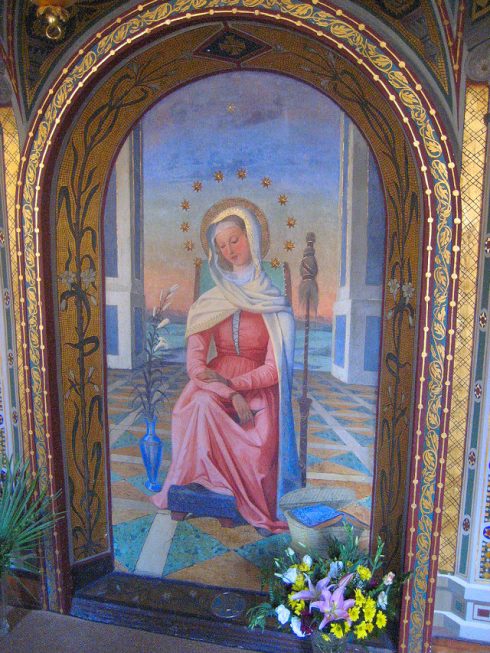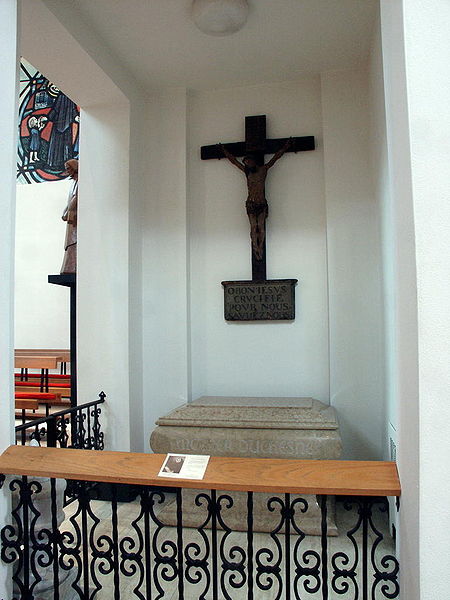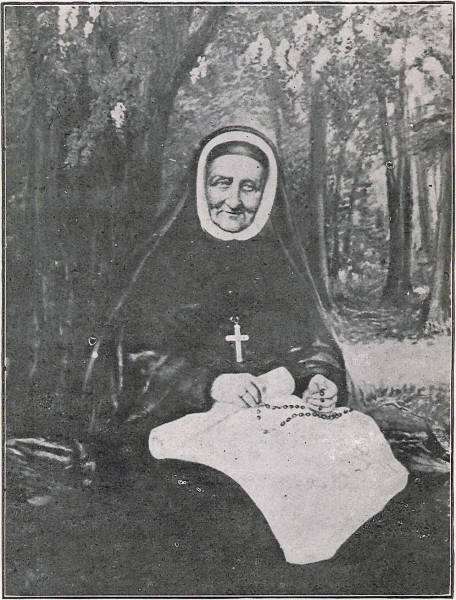St. Philippine-Rose Duchesne
Founder in America of the first houses of the society of the Sacred Heart, born at Grenoble, France, 29 August, 1769; died at St. Charles, Missouri, 18 November, 1852. She was the daughter of Pierr-Francois Duchesne, an eminent lawyer. Her mother was a Périer, ancestor of Casimir Périer, President of France in 1894. She was educated by the visitation Nuns, entered that order, saw its dispersion during the Reign of Terror, vainly attempted the re-establishment of the convent of Ste-Marie-d’en-Haunt, near Grenoble, and finally, in 1804, accepted the offer of Mother Barat to receive her community into the Society of the Sacred Heart. From early childhood the dream of Philippine had been the apostolate of souls: heathen in distant lands, the neglected and poor at home. Nature and grace combined to fit her for this high vocation; education, suffering, above all, the guidance of Mother Barat trained her to become the pioneer of her order in the New world.

The miraculous Image of Mater Admirabilis was painted in 1844 by Pauline Perdrau, who at that time was a Sacred Heart postulant. This Image is in Rome near the Spanish steps at Trinita dei Monti, the Monastery of the Religious of the Sacred Heart. A statue or painting of Mater Admirabilis can be found in every Sacred Heart school around the world.
In 1818 Mother Duchesne set out with four companions for the missions of America. Bishop Dubourg welcomed her to New Orleans, whence she sailed up the Mississippi to St. Louis, finally settling her little colony at St. Charles. “Poverty and Christian heroism are here”, she wrote, “and trials are the riches of priests in this land.” Cold, hunger, and illness; opposition, ingratitude, and calumny, all that came to try the courage of this missioner, served only to fire her lofty and indomitable spirit with new zeal for the spread of truth. Other foundations followed, at Florissant, Grand Côteau, New Orleans, St. Louis, St. Michael; and the approbation of the society in 1826 by Leo XII recognized the good being done in these parts. She yearned to teach the poor Indians, and old and broken as she was, she went to labour among the Pottowatomies at Sugar Creek, thus realizing the desire of her life. Stirred by the recitals of Father De Smet, S.J., she turned her eyes towards the Rocky Mountain missions; but Providence led her back to St. Charles, where she died.

Grave of Mother Duchesne, in the Shrine of St. Rose Philippine Duchesne in St. Charles, Missouri. Initially buried in the convent cemetery, St. Rose’s remains were exhumed three years later and found to be incorrupt. When she was moved to the shrine in 1951, they were found to be reduced to bones and dust. The enscription on the base of the cross is “O BON IESVS CRVCIFIÉ POVR NOUS SAVUEZ NOUS” This cross once was in the Visitation school in Grenoble, France, that was attended by Saint Duschesne.
Thirty-four years of mission toil, disappointment, endurance, self-annihilation sufficed, indeed, to prove the worth of this valiant daughter of Mother Barat. She had opened the road, others might walk in it; and the success hidden from her eyes was well seen later by the many who rejoiced in the rapid spread of her order over North and South America. Sincere, intense, generous, austere yet affectionate, endowed with large capacity for suffering and work, Mother Duchesne’s was a stern character that needed and took the moulding of Mother Barat.
Catherine M. Lowth (Catholic Encyclopedia)










